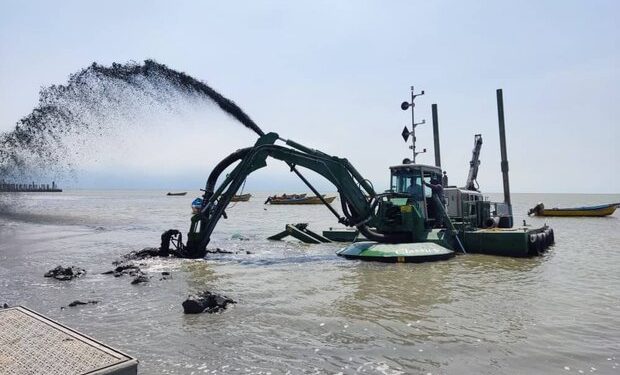Dredging
The dredging industry in Iran has been growing over the past two decades despite its ups and downs. The volume of dredging operations has increased from about one million cubic meters in 1978 to ten million cubic meters in 1998. However, less attention has been paid to the management of dredged materials, especially from an environmental point of view. Statistics show that 10 to 25 percent of all dredged materials in the world are contaminated with organic substances such as petroleum derivatives and hydrocarbons or mineral substances such as heavy metals. There is not a lot of information about this in Iran, but some sampling of materials dredged in Nowshahr and Imam ports indicates that similar problems exist in the area of these ports in Iran. Environmental management of dredged materials is based on monitoring the discharge of dredged materials on land or sea. Dumping of dredged materials on land (Land Disposal) takes place inside ponds built with dykes or inside landfills. Dumping of uncontaminated dredged material on land for beach construction, creation of artificial islands or agricultural purposes is also common. Offshore disposal usually takes place at a depth of 30 meters or more. If the dredged materials are contaminated, they should be discharged in Confined Disposal Facility (CDF).
The dredging industry in Iran has a lot of room for work due to the lack of basic facilities, and it is hoped that Iranian companies and organizations can put dredging of beaches and rivers on their agenda with more detailed planning and international cooperation.


